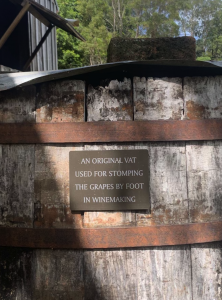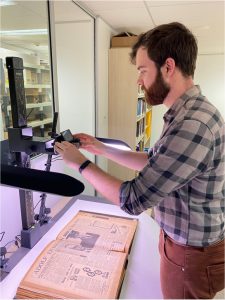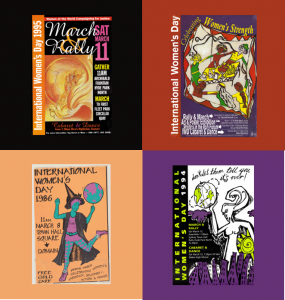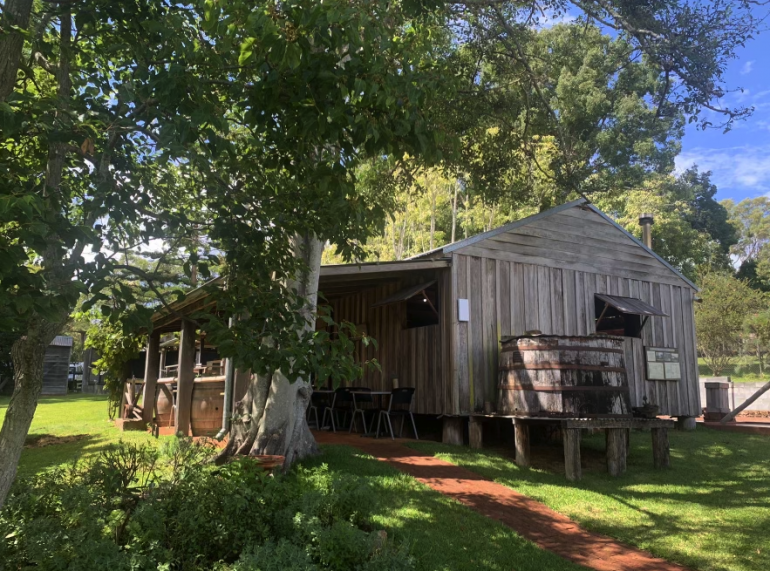I never thought I’d find myself mediating a debate about where to put an early 20th century wine stomping vat, let alone as part of my undergraduate History degree. But there I was, at a historic vineyard on the Mid North Coast, listening to volunteers discuss the difficulties of fitting a stomping vat into their new function space. One camp believed the vat should take prime position to stay true to the site’s history. Others argued the vat shouldn’t be in the function space at all because they needed more room for tables and chairs to improve profitability. It was a stalemate, with both camps raising compelling needs.
I had found myself stuck between this stomping vat and a hard place because I’d enrolled in HSTY 3902: History Beyond the Classroom.

What Is History Beyond the Classroom?
History Beyond the Classroom was designed in 2015 as one of three capstone units offered to History students. Recognising that only a minority of students continued their studies beyond their degree, the Department wanted to create a unit that would help students value what they had learned, introduce them to a range of history professionals and encourage them to think of history as a lived and lifelong practice that had a wider meaning than the essays they were used to writing.
In addition to guest lectures from industry professionals, the unit asks students to approach a community group or non-profit organisation of their choosing and do some volunteer work. Then, students work with that community to create a public history project that benefits the organisation. The results have been remarkable—ranging from digital archives and exhibitions; to podcasts, documentaries, oral histories and social media campaigns; to walking tours and brochures and zines; to grant applications and artefact inventories; to timelines and webpages—all showcasing the rich histories of the organisations and the people who run them.
What Are the Benefits of Work-Integrated Learning?
Of course, we now recognise the unit was Work Integrated Learning before we knew the term. As the unit has evolved, the benefits of such learning have become clear:

- Students realise they’ve learnt skills throughout their degree that are invaluable in the workplace. For example, some students draw on cultural competency as they negotiate with a variety of diverse stakeholders. Others conduct complex problem-solving through deep listening and consultation. Importantly, every project has required students to select, evaluate and communicate evidence—the bread and butter of academic research.
- The unit’s authentic assessment asks students to use these skills to find the larger significance in supposedly ‘smaller’ histories. This invites students to experience the myriad of ways that history connects people beyond the classroom, while providing them with an opportunity to make a tangible impact on their chosen community. Students have taken to this authentic assessment enthusiastically, with the unit receiving exceptional USS scores, and many describing their joy and pride in seeing their projects come to fruition and be of benefit to their communities and organisations.
- Work integrated learning has also helped students with the transition from University to the workplace. This is because the guest lectures and authentic assessment introduce them to a wide variety of roles that historians might end up taking on, including professional historians, archivists, curators, editors and journalists. Some students have gotten jobs from the unit, while others have continued volunteering. Even the students who don’t end up working in History have at least realised the skills they can bring to bear on just about any job or career they take on.
How might other disciplines in the Arts adopt this model if they were keen? While History Beyond the Classroom rests on the premise that everyone and every organisation has a history, other disciplines might think about their own unique contributions. We could imagine English students helping community organisations think about the narrative power of their existing texts, brochures, and website literature, or Gender and Cultural Studies students working through diversity and equity plans with a chosen group. The most important starting point would be discuss the motives and purpose of WIL in different disciplines to ensure the experience is meaningful for all concerned.
As a student of History Beyond the Classroom, the importance of the skills I developed while studying History quickly became apparent in the midst of the great stomping vat debate. After all, a lot of what we teach History students in the classroom is the importance of weighing up perspectives and deciding the most reasonable path forward. After listening to the community of passionate, hard-working volunteers debate the vat’s rightful place, I saw a potential middle ground. What if we were to turn the stomping vat into a centrepiece table, preserving the history of the site while increasing the space’s seating?
My proposal was met with smiles and nods, and in that moment, the magic of History of Beyond the Classroom was resoundingly clear. No essay I’ve written comes close to making me feel as proud of my History major as that one stomping vat did.
You can read more about Darcy’s project, along with the many different projects of the 2022 cohort of HSTY 3902 via their blogposts.






